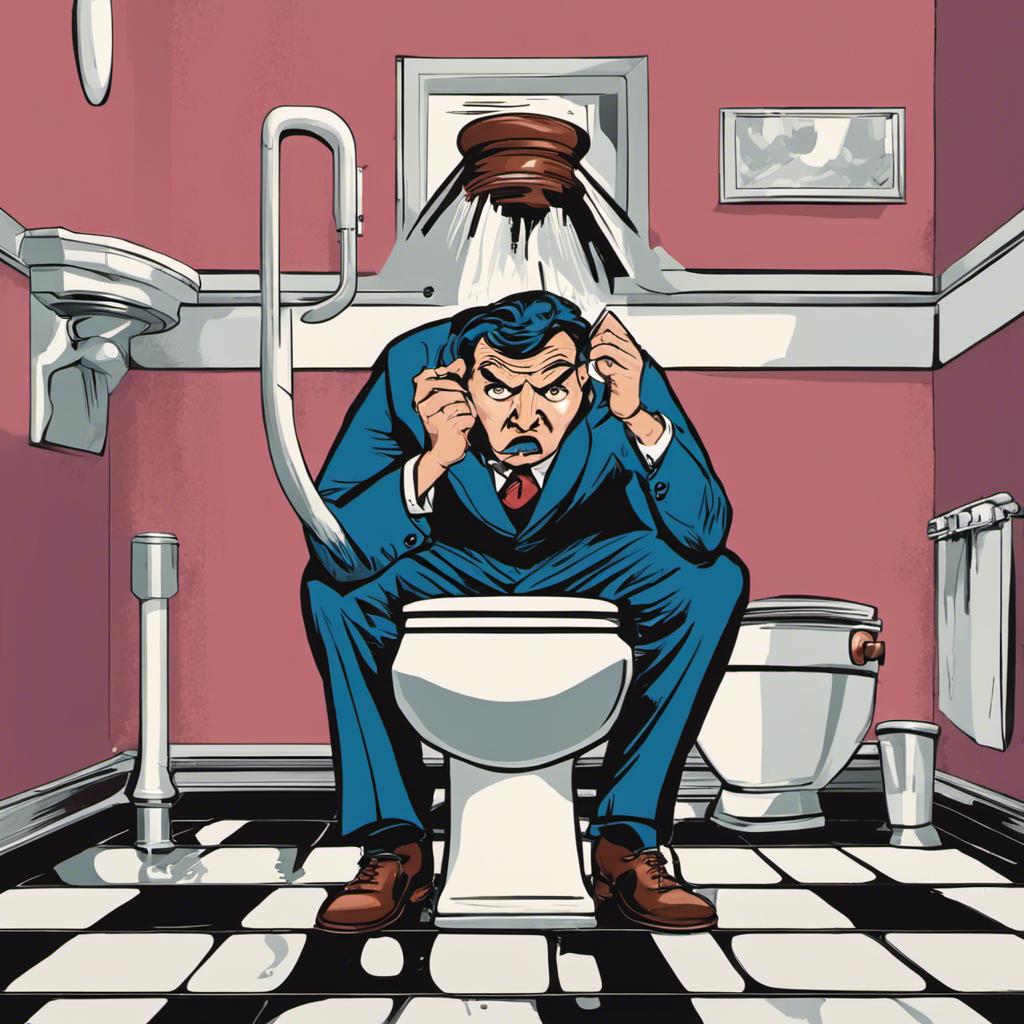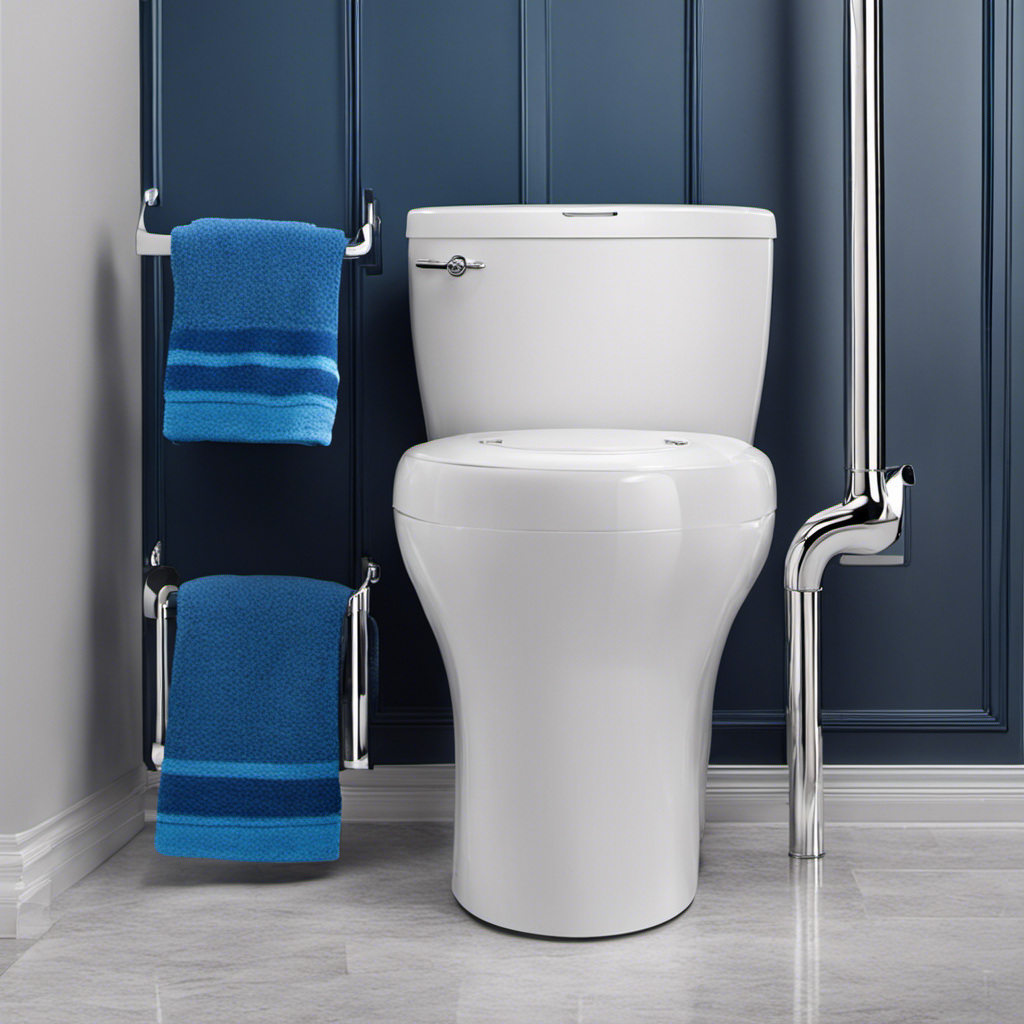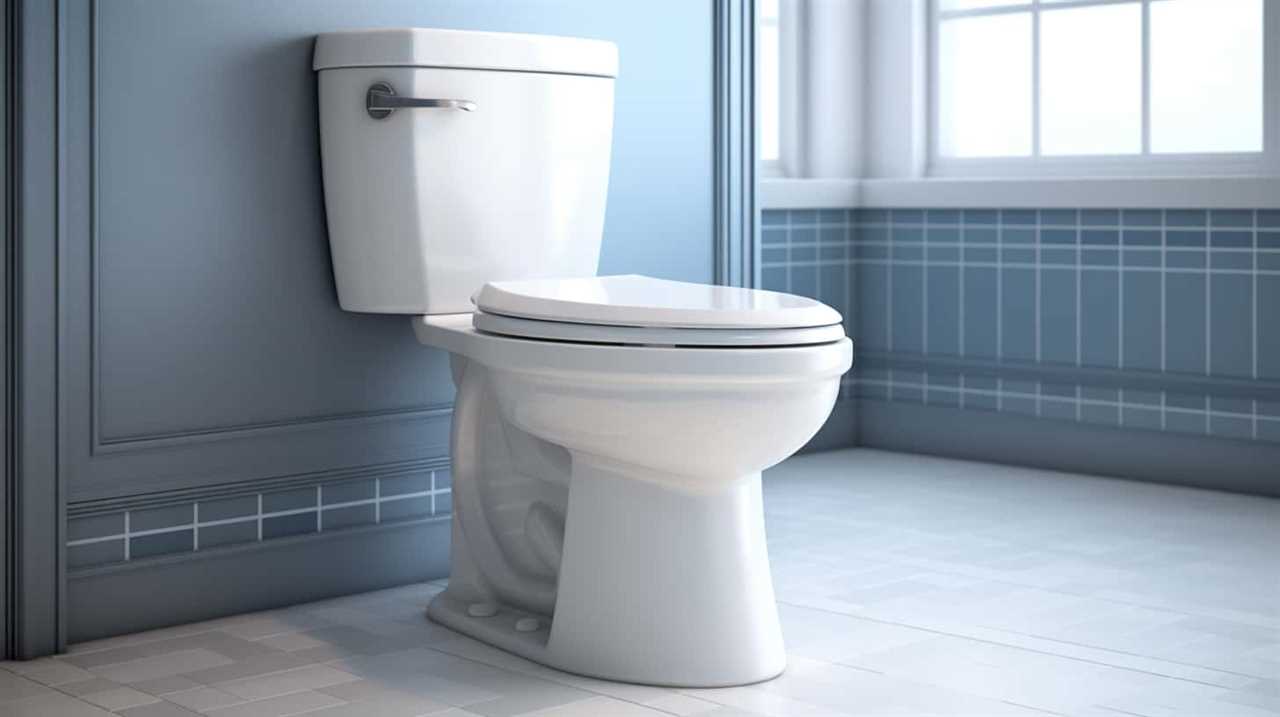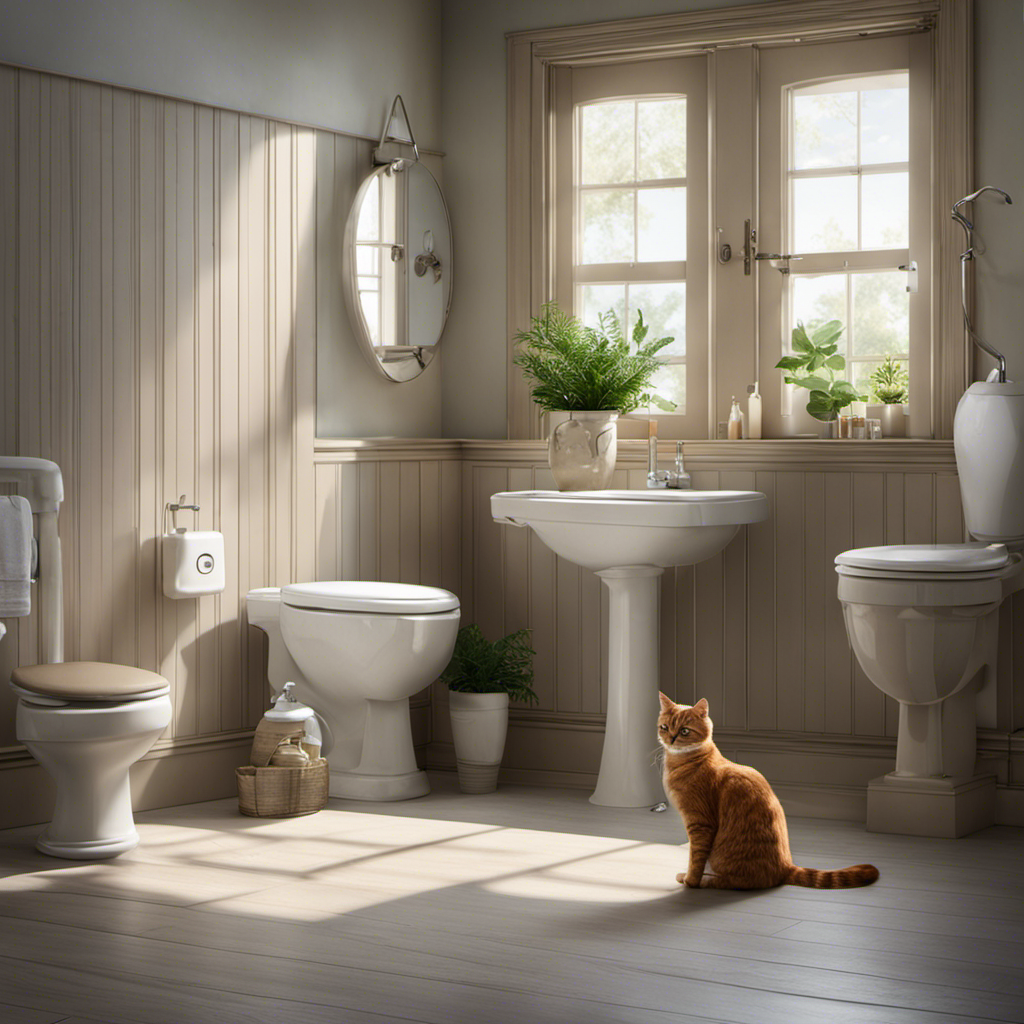I know what you’re thinking: ‘Oh great, another article about toilets. How exciting!’ But hang on, because if you’ve ever been faced with a stubborn toilet that just won’t flush, you know how frustrating and inconvenient it can be.
That’s why I’ve put together this practical guide to help you troubleshoot and fix the problem yourself. No need to panic or call a plumber just yet. With a little know-how and some simple steps, you’ll have that toilet flushing smoothly in no time.
Key Takeaways
- Low water level in the toilet bowl can affect flushing power and may be caused by a faulty fill valve or a blocked water supply line.
- To check the water level, remove the tank lid and adjust the float or fill valve. Flush the toilet after adjusting to see if the issue is resolved.
- If there is a potential blockage, inspect the toilet tank and adjust the float valve. If the water level is fine, use a plunger or toilet auger to dislodge the blockage.
- Troubleshoot the flush valve mechanism by checking the flapper for wear or damage, adjusting the chain length, and replacing the flapper if necessary. If the issue persists, examine the functionality of the fill valve.
Assess the Water Level in the Toilet Bowl
Check if the water level in the toilet bowl is too low. Adjusting the water level is a common solution for a toilet that won’t flush properly. When the water level is too low, it can affect the flushing power and cause problems.
There are a few common reasons for low water level in the toilet bowl. One possibility is that the fill valve is not working properly and needs to be adjusted or replaced. Another reason could be a clogged or blocked water supply line.
To check the water level, remove the tank lid and locate the fill valve. Use a screwdriver to adjust the float or the fill valve to increase the water level. Once the water level is adjusted, flush the toilet to see if the issue is resolved.
If not, it’s time to check for potential blockages in the toilet.
Check for Potential Blockages in the Toilet
Make sure you’ve already looked for any potential blockages in the toilet before trying any other troubleshooting methods.
To start, inspect the toilet tank by removing the lid and checking the water level. If the water level is too low, it could be the reason why your toilet won’t flush properly. Adjust the float valve to increase the water level and see if that helps.
If the water level is fine, the next step is to clear any toilet bowl blockage. Use a plunger to create suction and try to dislodge the blockage. If that doesn’t work, you can try using a toilet auger to break up and remove the obstruction.
Remember to always follow proper safety precautions and avoid using harsh chemicals that can damage your plumbing system.
Troubleshoot the Flush Valve Mechanism
Ensure the water level in the toilet tank is adequate to allow for a proper flush. If the toilet won’t flush, it could be due to a faulty flapper or a chain that is either too loose or too tight.
To troubleshoot this issue, start by checking the flapper. If it is worn or damaged, it will need to be replaced. Turn off the water supply to the toilet, flush it to drain the tank, and then remove the old flapper. Install the new flapper according to the manufacturer’s instructions.
Next, examine the chain that connects the flush handle to the flapper. Adjust the chain length if necessary, ensuring that there is enough slack for the flapper to fully close and seal. By replacing the flapper and adjusting the chain, you can often restore the toilet’s flushing functionality.
Now, let’s move on to examining the functionality of the fill valve.
Examine the Functionality of the Fill Valve
To troubleshoot the fill valve, start by turning off the water supply to the toilet. This will prevent any water from flowing and allow you to work on the valve safely.
Next, remove the tank lid and locate the fill valve. Inspect it for any signs of damage or wear. If you notice any leaks or cracks, it’s time to replace the fill valve. You can find replacement parts at your local hardware store or online.
To replace the fill valve, start by disconnecting the water supply line. Then, unscrew the old fill valve and remove it from the tank. Install the new fill valve by following the manufacturer’s instructions.
Once the new fill valve is installed, turn on the water supply and adjust the water level to the desired height. This can usually be done by turning a screw or knob on the fill valve.
Consider Calling a Professional Plumber
If you’re having trouble with the fill valve, it might be worth considering calling a professional plumber. While there are some DIY solutions for a non-flushing toilet, it’s important to know when to seek professional help. A plumber has the expertise and tools to diagnose and fix the issue efficiently.
Here are some common causes of toilet flushing problems:
| Common Causes | DIY Solutions |
|---|---|
| Clogged drain | Use a plunger or plumbing snake to clear the blockage |
| Faulty flapper | Replace the flapper with a new one |
| Low water level | Adjust the water level in the tank |
| Broken flush handle | Replace the handle with a new one |
| Malfunctioning fill valve | Call a professional plumber for repair or replacement |
While attempting DIY solutions can be cost-effective, it’s essential to know your limitations. If you’re unsure or the problem persists, it’s best to leave it to the professionals. They can ensure a proper fix and save you from potential headaches down the line.
Conclusion
In conclusion, when your toilet won’t flush, it’s important to assess the water level. Check for blockages and troubleshoot the flush valve. Examine the fill valve. If all else fails, don’t hesitate to call a professional plumber for assistance.
Remember, dealing with a non-flushing toilet can be as frustrating as trying to swim against a strong current. But with the right knowledge and practical steps, you can quickly unclog the situation and restore the smooth flow of your bathroom routine.










